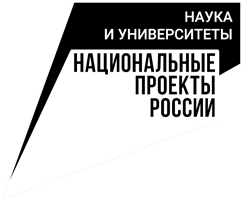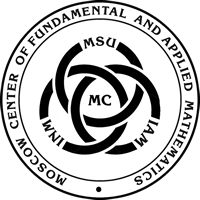159th meeting of the seminar
«Mathematical modeling of geophysical processes: direct and inverse problems»
The seminar is devoted to the consideration of various aspects of mathematical modeling of physical processes in the atmosphere, hydrosphere and active layer of land, associated with solving problems arising in the study of the problems of climate change and the natural environment.
Seminar Organizing Committee
| Leaders: |
Doctor of Physics and Mathematics A.V. Glazunov (Marchuk Institute of Numerical Mathematics of RAS) Doctor of Physics and Mathematics I.A. Repina (A.M. Obukhov Institute of Atmospheric Physics of RA) Doctor of Physics and Mathematics V.M. Stepanenko (RCC MSU, Geographical Faculty of Moscow State University) |
| Secretary: |
A.V. Debolsky (RCC MSU, A.M. Obukhov Institute of Atmospheric Physics of RAS). |
PROGRAM
17:15
| K.P. Belyaev | P.P. Shirshov Institute of Oceanology of RAS |
| A.A. Kuleshov | M.V. Keldysh Institute of Applied Mathematics of RAS |
| I.N. Smirnov | Lomonosov Moscow State University |
Modeling the dynamics of the ocean with the assimilation of observations by the method of generalized Kalman filtration.
The report is devoted to modeling the ocean dynamics using the famous ocean circulation models - Hybrid Circulation Ocean Model (Hycom) and Nucleus for European Modelling of the Ocean (NEMO) using the method of assimilation of the observation data - a malanca -mercenary GKF)). The results of a comparison of the methods of assimilation of GKF data and the standard method of objective ensemble interpolation (ENOI), which is a special case of the Kalman filtration method (ENKF), are presented. Methods are compared according to various criteria. The observed data uses an array of satellite measurements of the ocean level (altimetry) Archiving, Validating and Interpolation Satellite Oceanography Data (Aviso), and as a basic numerical model of the Ocean circulation model - the Hycom) model. It is shown that the GKF method has several advantages over the ENOI method. The results of numerical experiments with the assimilation of AVISO data according to the methods under consideration are also analyzed, their results are compared with the calculation without assimilation of observations according to the Hycom model. The results of the calculations are also compared with the data of observations, and a conclusion is made about the suitability of the GKF method for applied calculations on predicting the condition of the ocean. The results of the calculations of the main characteristics of the ocean in the Atlantic using the model of circulation of the Nucleus for European Modelling of the Ocean (NEMO) with the assimilation of observations using the GKF method are presented. As data from observations, both Aviso altimeter and observation data from Argo drifts at various horizons are taken. The state and variability of the ocean level, water temperature and salinity at various horizons are analyzed. The results of calculations with the assimilation of observation data are compared with similar calculations according to the source model without assimilation of data.
The seminar will be held in the form of a webinar on the Zoom platform.
Topic: семинар "Математическое моделирование геофизических процессов: прямые и обратные задачи".
Time: Mar 02, 2023 05:15 PM Moscow (GMT+3)
Join Zoom Meeting: https://us02web.zoom.us/j/85632416498?pwd=Q0lBSzRtL29WSm9OWmJGVjNGMStEQT09
Meeting ID: 856 3241 6498
Passcode: 453997
For communication on all issues related to the work of the seminar, please contact the academic secretary Andrey Vladimirovich Debolsky at and.debol@srcc.msu.ru

